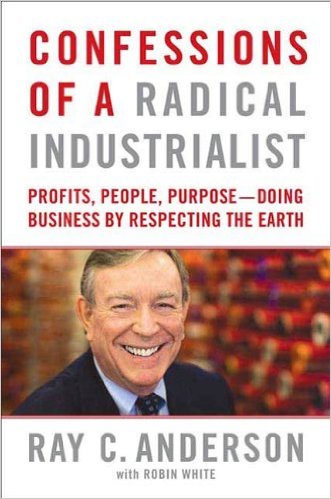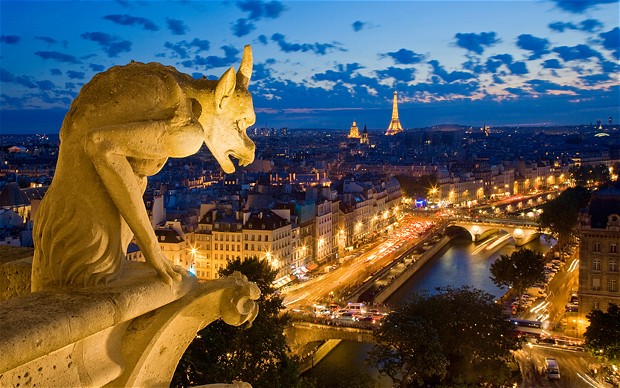Thanksgiving. A time of family, abundance, thankfulness and fellowship.
While we are on the theme of learning to love and respect each other better, another powerful theme for good is sustainability – the care of our planet.
For many of today’s businesses, organizational design follows a well-trodden path – whether by functional role from the CEO on down, by business unit, or by product or service line. We’ve written about these patterns in a number of past blogs.
We’ve also touched on recent innovations in organizational structure, as in our recent blog series from organizational design innovation expert David Creelman.
But whether you look at either traditional organizational structures or more recent forms of organizational design, the underlying focus seemingly remains the same – organizing the workplace and the efforts of the team towards the common purpose of collaboration, information flow, efficiency and profit maximization.
What would organizational design look like, if the business purpose was instead to focus on sustainability? How would it be different?
 I was struck by this thought while reading Ray Anderson’s book, Confessions of a Radical Industrialist, another recent trip to the super awesome (and super sustainable) Toronto Public Library turned up.
I was struck by this thought while reading Ray Anderson’s book, Confessions of a Radical Industrialist, another recent trip to the super awesome (and super sustainable) Toronto Public Library turned up.
Galvanized by the sense that private sector organizations and the individuals within them must take ownership to actually achieve significant progress on the sustainability file, and by the street smart sense that doing so would be good for his business on both revenues and cost reduction, Anderson went from thought to serious action.
The founder (in 1973) of Interface, a carpet tile manufacturer, describes the journey of his team of 4,000 “employee-environmentalists”, towards a sustainable future. That journey, which started in the summer of 1994, ended for Ray with his death in 2011, but continues today. It is an inspiring story of a business transition away from a “smokestack” past to a “do no harm to the earth” future, driven by a top down big hairy audacious goal commitment to “Mission Zero”.
In Anderson’s own words “we will reach the summit when we have cut our last umbilical cord to the mines and the oil wells, when we no longer dump any waste into the landfills or pollution into the air or water. When we no longer take anything from the earth that earth cannot renew rapidly and naturally.” Take nothing. Do no harm. Powerful stuff. From business no less.

The seven paths of Interface to sustainability?
- Moving towards zero waste in production
- Increasingly benign emissions, working up the supply chain.
- Increasing efficiency and using more and more renewable energy.
- Closed loop recycling, copying nature’s method of turning waste into food.
- Resource efficient transportation, from commuting to logistics to plant siting.
- Creating a corporate ecosystem (employees, suppliers, customers, communities) where co-operation replaces confrontation.
- Redesigning commerce, by assessing costs accurately, and setting real prices that reflect those costs, and maximize resource allocation efficiently.
And their best practices tips for organizations wanting to embark on that journey:
- Measure on the macro level, but manage on the micro level.
- Make the waste number relative to output.
- Index waste costs per unit of production to a historical baseline.
- Measure consistently and fairly from one business unit to the next, and share results, but compare a facility only against itself.
- Post results for all to see.
What I found most interesting about the book was Anderson’s frequent references to testimonials – to the individuals within the organization who contributed to help the company hit and exceed the milestones it set for itself along the way. In a world where much is written but little seems to be done about employee engagement, these were truly interesting stories of aligned, innovative, engaged employees working then and now to make it happen.
This message seems particularly relevant – and hopeful – for organizations attempting, and currently failing, to achieve progress on sustainability goals AND engage younger workers who some describe as the most socially conscious generation since the 1960s.
What happens when an organization and its people are aligned around a cause? What does that organizational design look like?
At Organimi we make org charts possible – easy and online…including not just for your own staff, but for that ecosystem of employees, suppliers and customers Anderson talks about that your business may want to engage in your own sustainability efforts. So we figured we should check out Interface and see.
We’re sharing a peak / guess at the Interface organizational chart using published data, as we try and piece this together ourselves. You see titles like Vice-President of Sustainability, Director, Sustainability Strategy, Sustainability Manager, Sustainability Co-ordinator and Sustainability Project Manager. Below is an illustrative “sustainability chain of command” (appropriately colored in green using Organimi’s coloring feature).
From a titles and functional design point of view it may seem that not too much needs to change – great news for all organizations that want to get on the sustainability path.
However, and as a read of Ray Anderson’s book will show you, “getting to zero” is about a whole lot more than titles in boxes and making the structure of the team visible to everyone.
Boards of directors and C-level executives need to enlist top down leadership and mentorship in defining the mission, creating smart but stretch goals and selling the mission internally and externally. In the process, they need to – and as Interface’s experience has shown – really can empower employees with the structure, roles, tools and incentives they need to innovate and make things happen.
Using tools like Organimi, and permitting online sharing, saves a few trees…..but most importantly is a good starting point to align your team members towards a common goal. And this is good.
Get going mapping out your sustainability team today.

…and on the subject of fellowship, given recent events, we noted a blog post last week from Gianpiero Petriglieri “After Paris, We Need More Fellowship, Not More Leadership” He eloquently describes the need for curiousity (“what every fundamentalism despises”), for compassionate leadership, and for more fellowship. He concludes: “We cannot win a war on intolerance. We can only respect each other out of it.”
As always thanks for reading.
